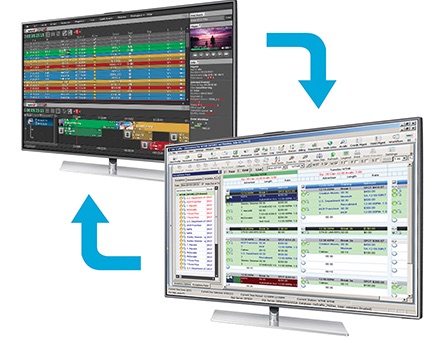The Tech That Turns Advertising’s Rubik’s Cube

Rapidly changing advertising and television business models are making traffic and billing software more important than ever, which can be both a boon for vendors and a headache.
Unlike systems from only a few years ago that simply handled the process of inserting and then billing for ads carried on a linear TV feed, stations and broadcasters are now looking for traffic and billing systems that can handle a host of platforms and business issues, from rights management to data analytics and over-the-top services.
In the public TV sector, Myers’ ProTrack Broadcast Management System is now playing a key role in centralized master control systems for public TV stations to help them manage and deliver their content with fewer costs, says Crist Myers, president/ CEO of Myers. ProTrack has also incorporated into Sony Electronics and WGBH’s Public Media Management (PMM) system that Sony is selling to public stations.
But as these systems become more central to the operations of a station or network, users are expecting them to do much more, creating both design and integration challenges.
“We have been doing a lot of work around integrations with our core productions and features to make them more efficient” for multiplatform delivery and emerging programmatic TV efforts, explains Eric Mathewson, founder & CEO of WideOrbit.
One major driver for these changes has been the need to handle the complexities of multiplatform ad campaigns. “You are now delivering content across many different channels,” says Michael Atkin, founding partner and CEO for BroadView, which has been ramping up capabilities for an on-demand world. “You can have 18 different platforms, with six or eight different ways of monetizing the content,” from advertising to subscription and electronic sell-through.
“Clients increasingly want to have an all-in-one solution that can support most or all of their businesses,” adds Amir Lavi, SintecMedia Americas president. To address that imperative, SintecMedia has the all-in-one offering On Air and has been acquiring additional companies including Pilat Media, Storer TV, Argo Systems and Broadway Systems in the last two years.
Broadcasting & Cable Newsletter
The smarter way to stay on top of broadcasting and cable industry. Sign up below
Those deals have allowed Sintec to take some of the best modules and features from the acquired systems and add them to other products. “Because we own all the products, we are able to provide a high-quality, seamless integration that is practically like being on the same platform,” Lavi noted.
Others have been focusing on an open, modular architecture that will make it simple to integrate software controlling a host of different functions. “Media companies are selling [campaigns across multiple] platforms and distributing content in a multiplatform environment that has created a complex Rubik’s Cube for them,” says Sarah Foss, VP, product management, advertising management systems, Imagine Communications. “To address that problem, we believe that the sales, traffic, billing and business intelligence software has to evolve toward an open modular system… that will allow media companies to mix and match robust modules depending on how they are monetizing their programming.”
At the NAB Show in April, Imagine will show modules designed to help media companies be more flexible and adapt their software systems to their specific business needs, Foss explains. “By wrapping them [the modules] in open API, companies will be able to connect to exactly the right piece of the puzzle they need.”
Integrating those systems into the complexities of the emerging programmatic ad market for digital and increasing TV is another major focus, with SintecMedia and WideOrbit launching their own programmatic marketplaces.
Tight integration between the widely used WideOrbit traffic and billing software and the company’s programmatic TV marketplace launched last year makes it possible for stations to preserve the value of their inventory while bringing in new buyers, Mathewson stresses. Currently their market places reaches DMAs covering about 75% of U.S. homes.
“There is a tsunami of demand that is coming,” Mathewson adds, noting that “overall numbers have been growing by 50% month-over-month” and that many sources of demand are integrating into their programmatic TV marketplace. “It is difficult to predict, but programmatic could account for 3%, or $2.1 billion, of the $70 billion TV ad footprint a year from now,” he believes.
